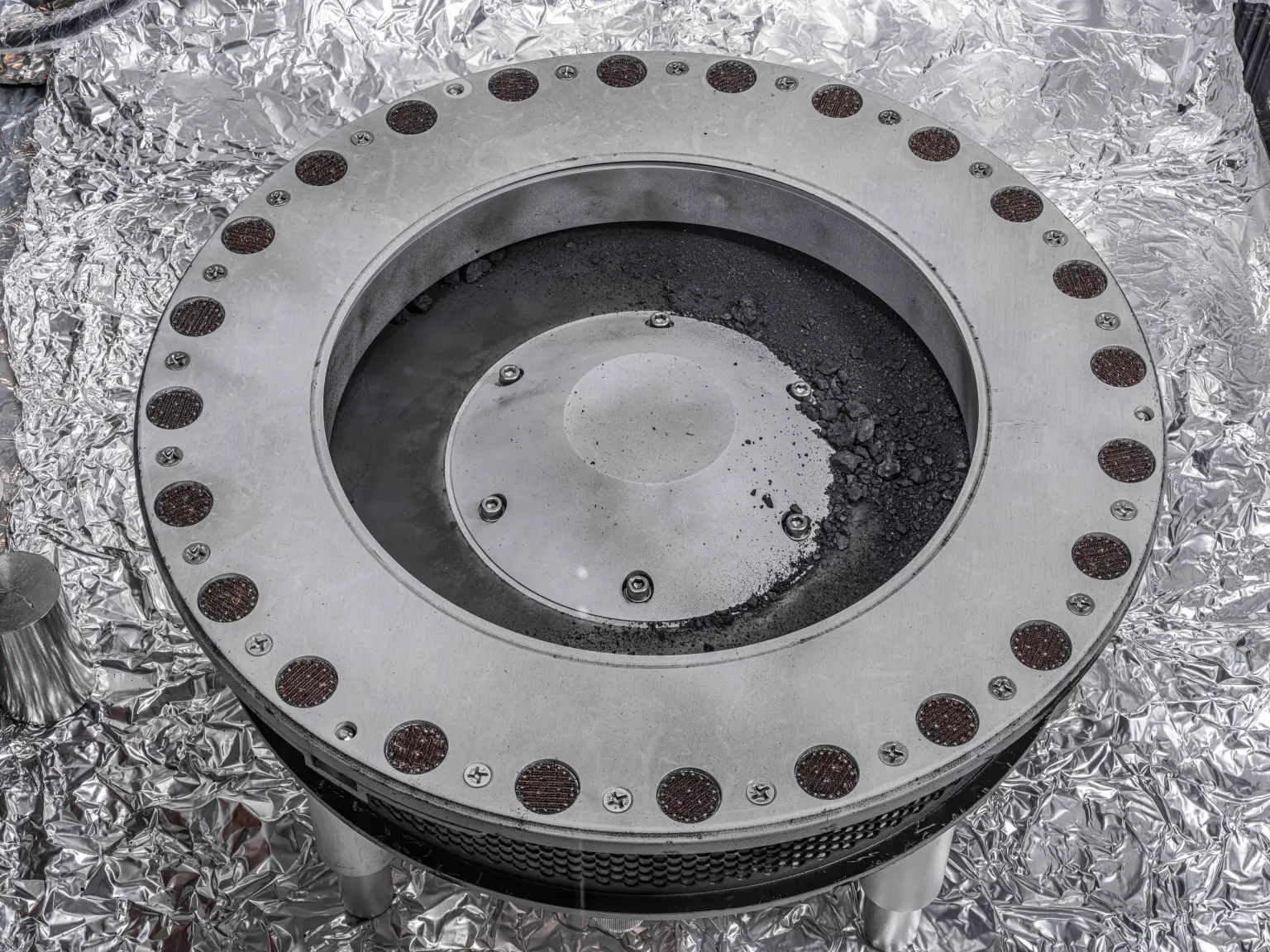British scientists are examining a teaspoon-sized specimen from a 4.5-billion-year-old asteroid that journeyed millions of miles to reach Earth.
NASA’s Osiris-Rex Delivers Risky Asteroid Sample to UK Museum
The Natural History Museum in the UK has received a 100mg portion of tiny pieces of rock and dust fragments collected from asteroid Bennu for examination. These samples were gathered from the surface of the 500m-wide asteroid by NASA’s Osiris-Rex spacecraft in 2020 and subsequently transported to the Utah desert via capsule two months ago. NASA has characterized this sample as the most dangerous rock in the Solar System.

Image by NASA
Unlocking Cosmic Mysteries
The Natural History Museum, along with the universities of Open, Manchester, and Oxford, will conduct a series of tests on the unremarkable black dust-like sample extracted from the 4.5-billion-year-old asteroid. This unassuming specimen holds the potential to unravel significant mysteries surrounding the formation of Earth.
Preliminary assessments conducted by NASA researchers reveal that segments of the asteroid are abundant in carbon and water, constituting approximately 5% of its mass. Some of this material is believed to be organic and is thought to have originated from substances that took shape during the solar system’s inception around 4.56 billion years ago. The presence of these organic compounds holds the promise of providing insights into the origins of life on Earth.
Researchers also believe that Bennu might harbor extraterrestrial water trapped within its minerals. Studying the composition of these minerals will help substantiate the hypothesis that asteroids played a crucial role in delivering water to Earth some 4.5 billion years ago.
Engaging scientists from Britain and around the globe, this collaborative investigation aims to unveil Bennu’s mysteries. Early findings are anticipated to be shared at the Lunar and Planetary Science Conference (LPSC) in March.







